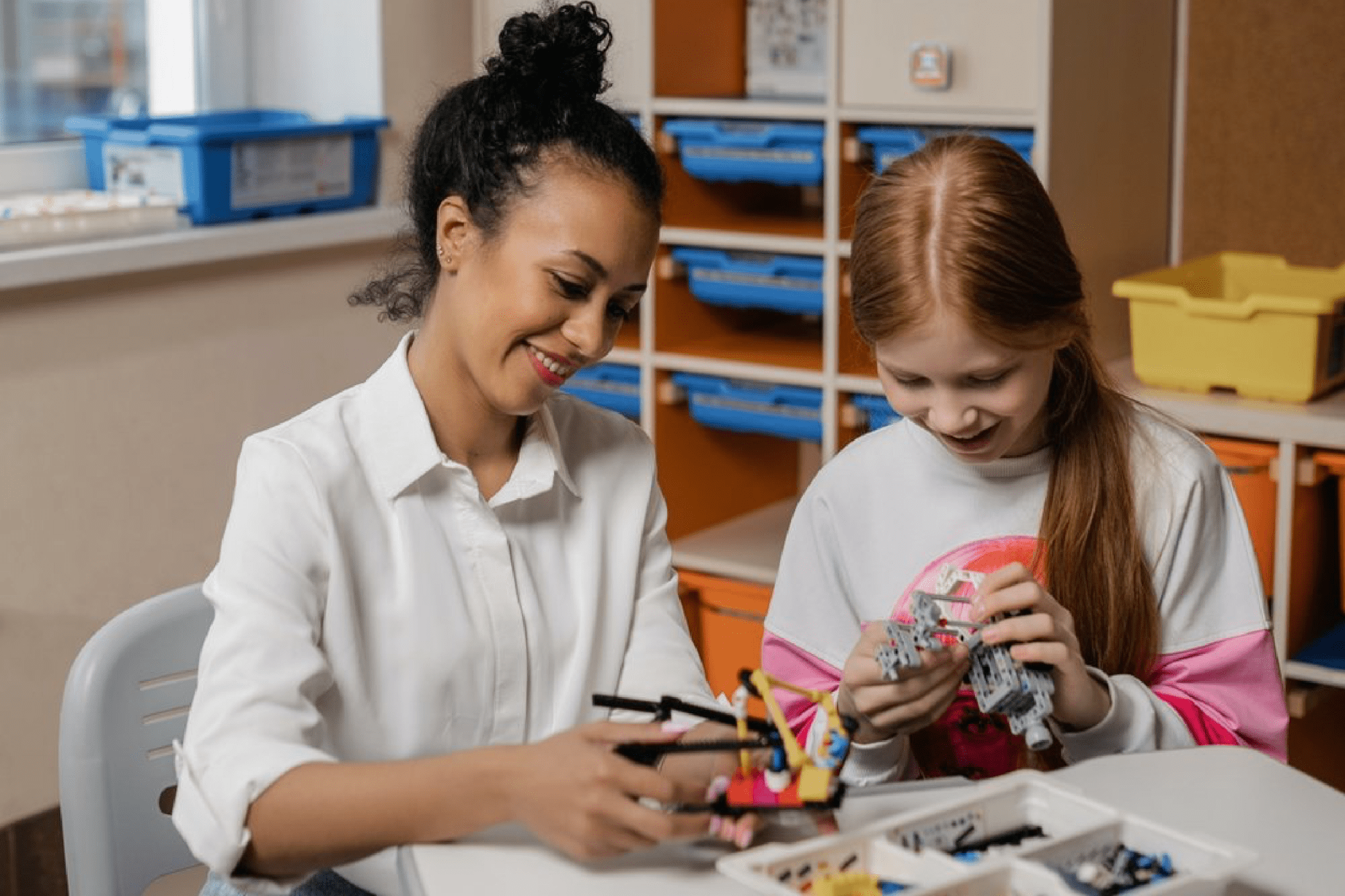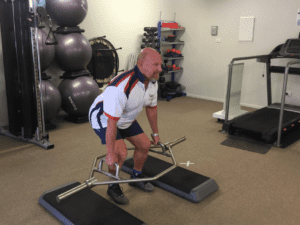There is an increasing amount of research reporting improvements for children with diagnoses of ASD or social communication impairments that participate in LEGO®-Based Therapy. These include:
- Increased self-initiation of interactions during free play with peers (LeGoff, 2004)
- More sustained social interactions outside of LEGO®-Based Therapy sessions (LeGoff, 2004)
- Observed reductions in fixed interests and repetitive behaviours (LeGoff & Sherman, 2006)
- Improved social communication and reduced inappropriate behaviours (Owens et al., 2008)
- Emerging evidence of improvements across communication competencies (including social skills) when adapted for Augmentative and Alternative Communication users (Gough & Dutton, 2018)
- Improved social and family relationships and increased social play (Lindsay et al., 2016)
During a LEGO®-Based Therapy session, three or four children of similar ages and abilities work together to build a LEGO® model following.
Each child takes on one of four specific roles to do this:
The Engineer oversees reading and relaying the instructions. The Engineer must tell the Supplier what pieces to retrieve and tell the Builder how to build the model.
The Supplier oversees finding the correct LEGO pieces. The Supplier must listen to the Engineer and figure out what piece to retrieve, and then given these pieces to the Builder.
The Builder oversees physically building the model. The Builder must listen to instructions provided by the Engineer and receive the pieces that are retrieved by the Supplier.
The Foreman makes sure everyone is doing what they need to do. They provide help to other roles when needed and look out for social challenges that may need problem-solving by the group.
Using this format provides each child with an opportunity to practice and develop a wide range of skills, including language skills (in both giving and receiving instructions) turn-taking, negotiating, sharing and collaborative social problem-solving. It also encourages children to reflect on their own actions and skills as well as give constructive feedback to their peers.
How to play?
Playing with three people:
First, choose someone to be the Engineer. This person will be the gatekeeper of the LEGO® project (the instruction booklet). The other members of the group are not allowed to see the project book. This means The Engineer will need to use their communication skills to describe the pieces needed and how to put them together.
The Engineer provides instructions to both the Supplier and the Builder.
The Engineer will describe the size, shape, colour, how many pieces, and how many bumps the LEGO® pieces need.
The Engineer will provide instructions for how to build the project. For example, the Engineer could say “Put the white piece in the middle of the blue roof” if you were building a house.
Second, choose someone to be the Supplier. This is a pivotal role in the world of construction.
The Supplier is responsible for ensuring that they have the correct pieces of LEGO for the Builder.
The Supplier can ‘check-in’ with the Engineer by showing them the LEGO piece and confirming it is correct.
If it is correct, they pass it to the Builder.
If it is incorrect, the Supplier can ask for more information from the Engineer.
Finally, choose someone to play the most coveted role in the project – the Builder.
The Builder is responsible for building the project.
The Builder listens to instructions provided by the Engineer for building.
The Builder must work with the Engineer to ensure what they are building is the same as what is in the project booklet.
Playing with two people.
If there are only two of you, one person can take on two roles. For example, one person may be the Supplier and Builder and the other person the Engineer.
Playing with four people.
If you have four people, then the Foreman role can be introduced. The Foreman makes sure the team are working together to build their project. This person can share encouraging words, compliment others, or help someone with their role.
References
LeGoff, D.B., Gómez de la Cuesta, G., Krauss, G.W., & Baron-Cohen, S. (2014). LEGO®-based therapy: How to build social competence through LEGO®-based clubs for children with autism and related conditions. London: Jessica Kingsley Publishers.
Raising Children Network (2018). Lego® therapy: Therapy at a glance. Retrieved from: https://raisingchildren.net.au/autism/therapies-guide/lego-therapy
Andras, M (2012). The value of LEGO® Therapy in promoting social interaction in primary-aged children with autism. Good Autism Practice, 13, 2, 2012.
Owens, G., Granader, Y., Humphrey, A., & Bohen-Cohen, S. (2008). LEGO® therapy and the social use of language programme: An evaluation of two social skills interventions for children with high functioning autism and Asperger syndrome. Journal of Autism and Developmental Disorders, 38, 1944-1957. doi: 10.1007/s10803-008-0590-6.
LeGoff, D (2004) Use of LEGO as a Therapeutic Medium for Improving Social Competence Journal of Autism and Developmental Disorders 34 (5), 557–571.
LeGoff, D.B., & Sherman, M. (2006). Long-term outcome of social skills intervention based on interactive LEGO® play. Autism, 10(4), 317-329. doi: 10.1177/1362361306064403.
Gough, S., & Dutton, N. (2018). The novel use of LEGO®-based therapy to develop communicative competence in children who use augmentative and alternative communication (AAC) systems. The 9th Annual Conference of Association for Simulated Practice in Healthcare, Liverpool, United Kingdom. https://doi.org/10.1136/bmjstel-2018-aspihconf.1
Sally Lindsay, S., Hounsell, K. G., & Cassiani, C.(2017). A scoping review of the role of LEGO® therapy for improving inclusion and social skills among children and youth with autism. Disability and Health Journal, Volume 10, Issue 2, https://doi.org/10.1016/j.dhjo.2016.10.010.




